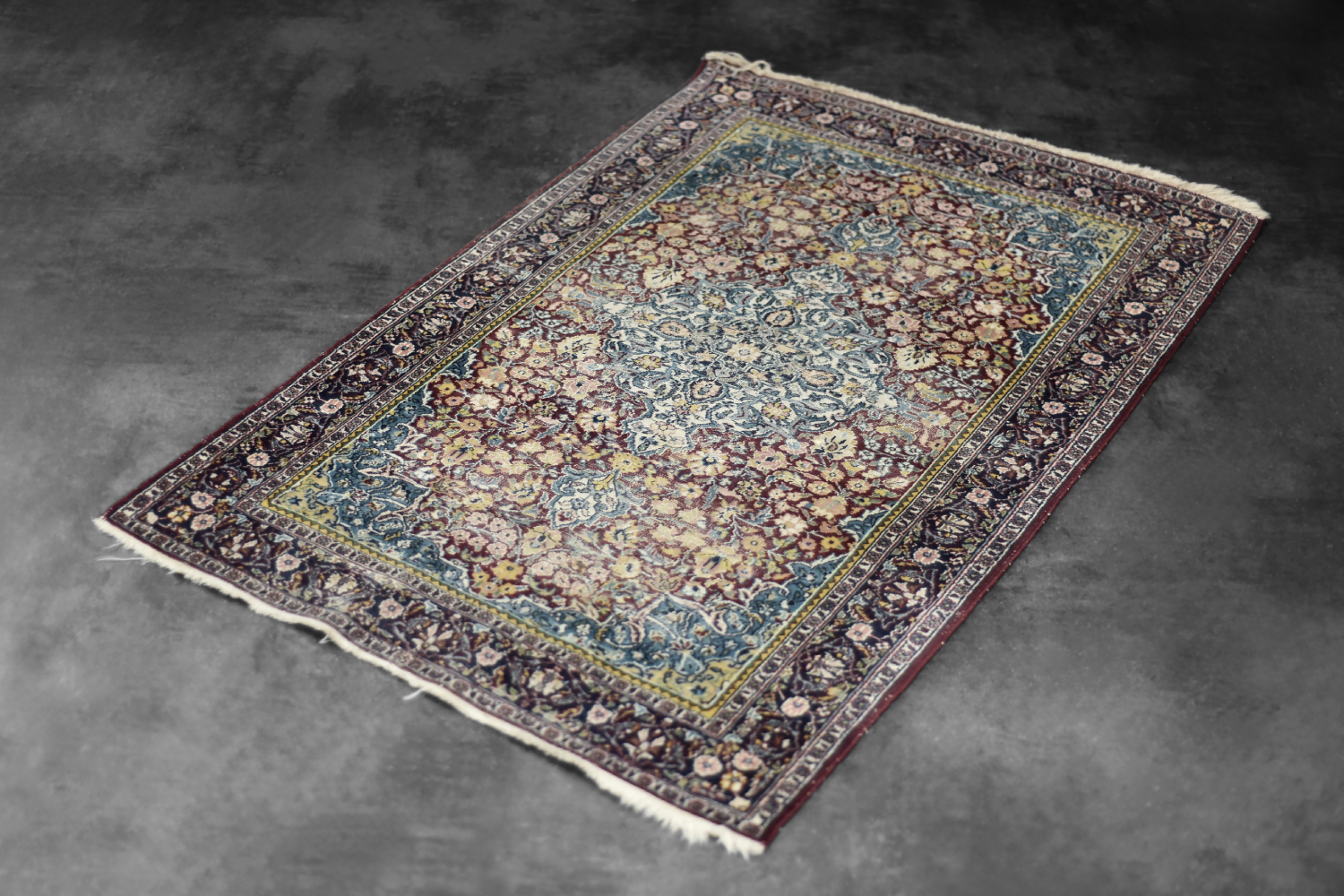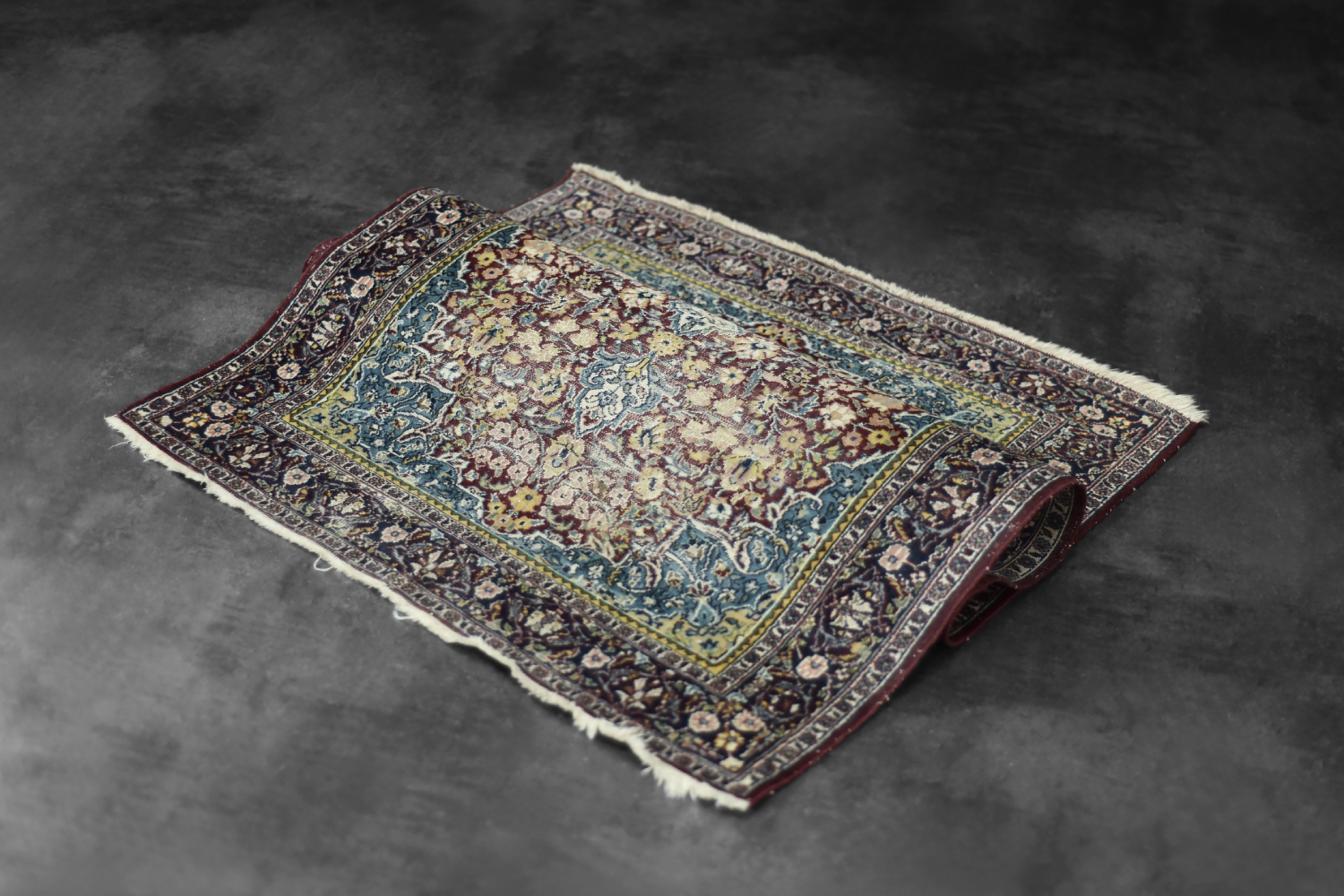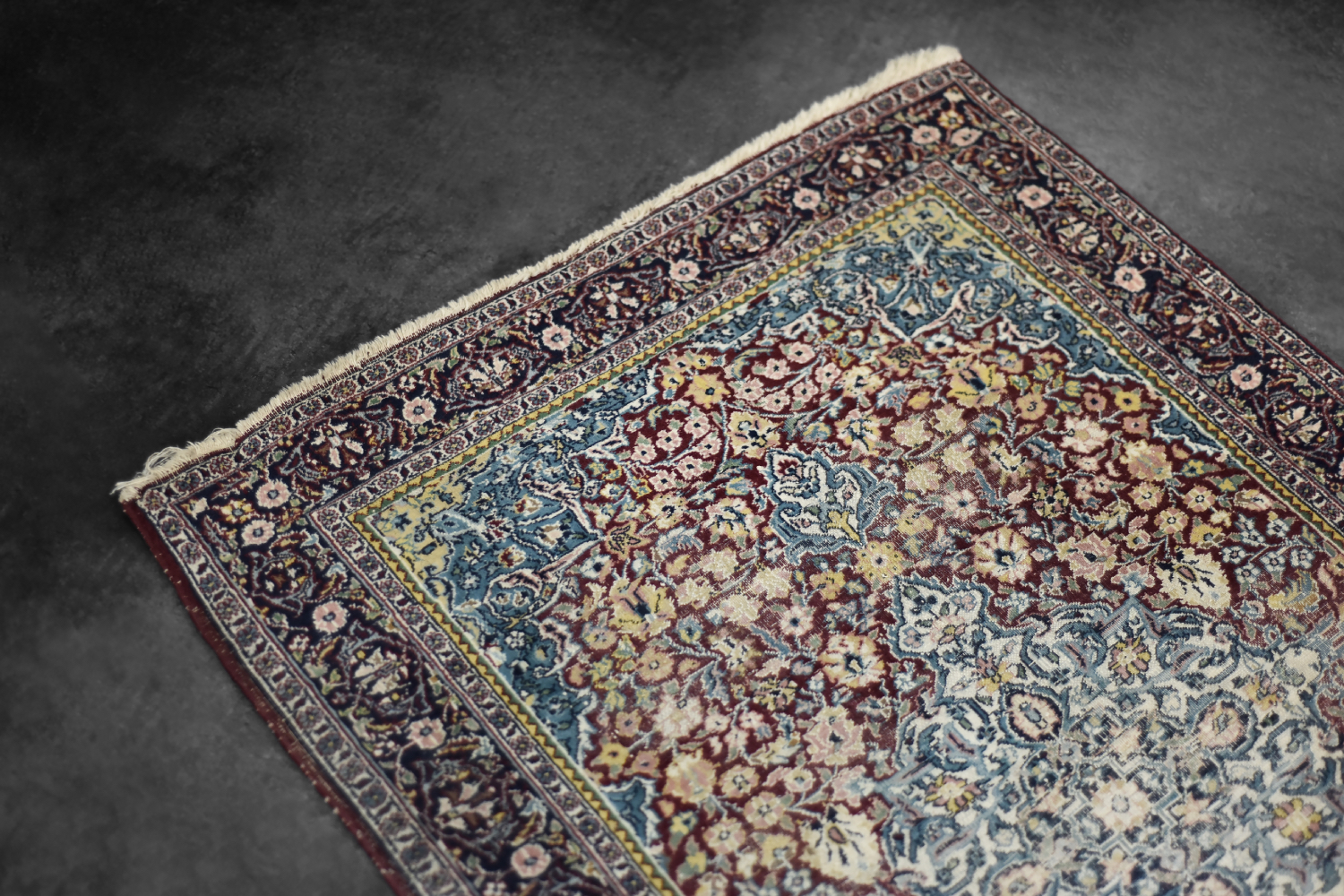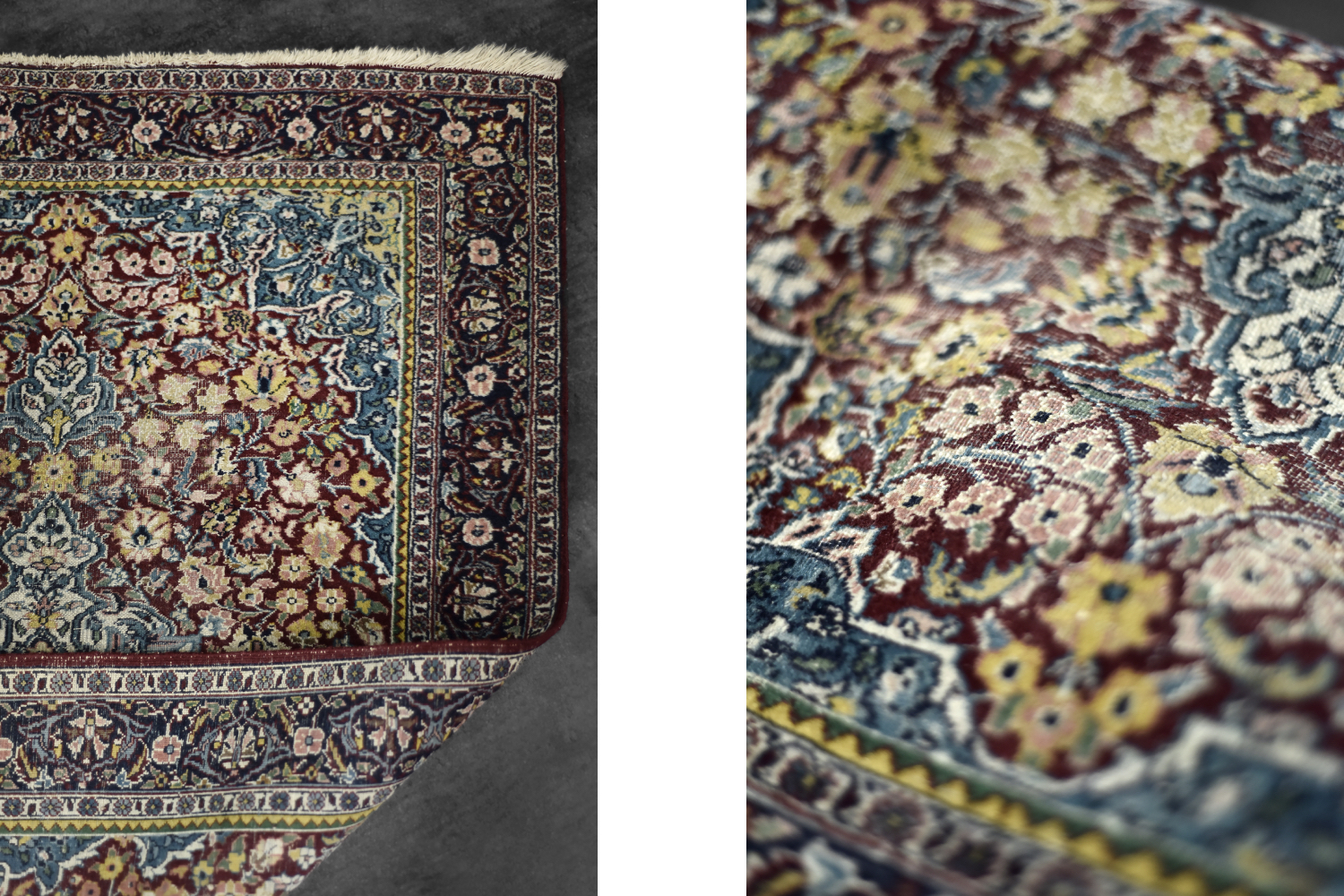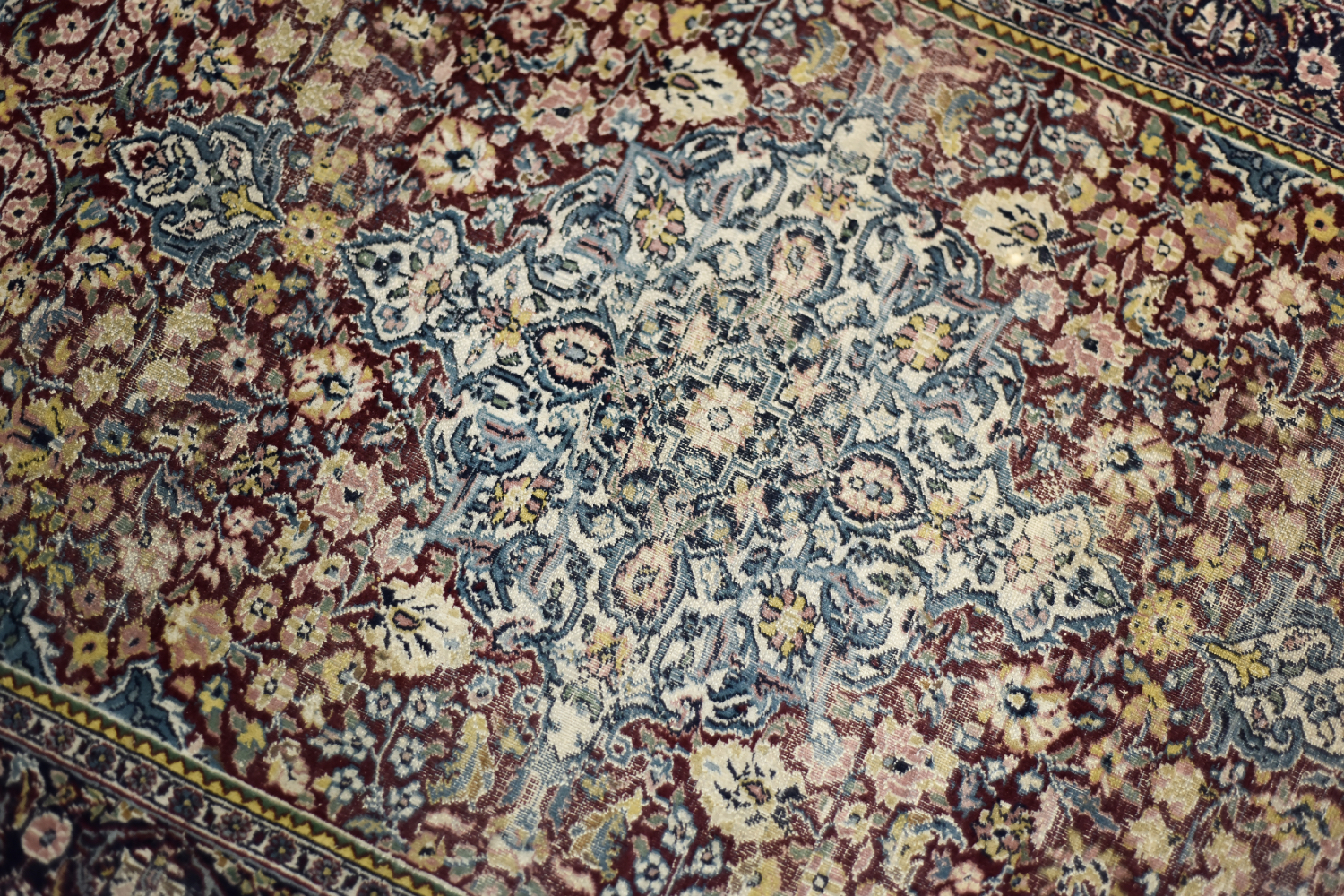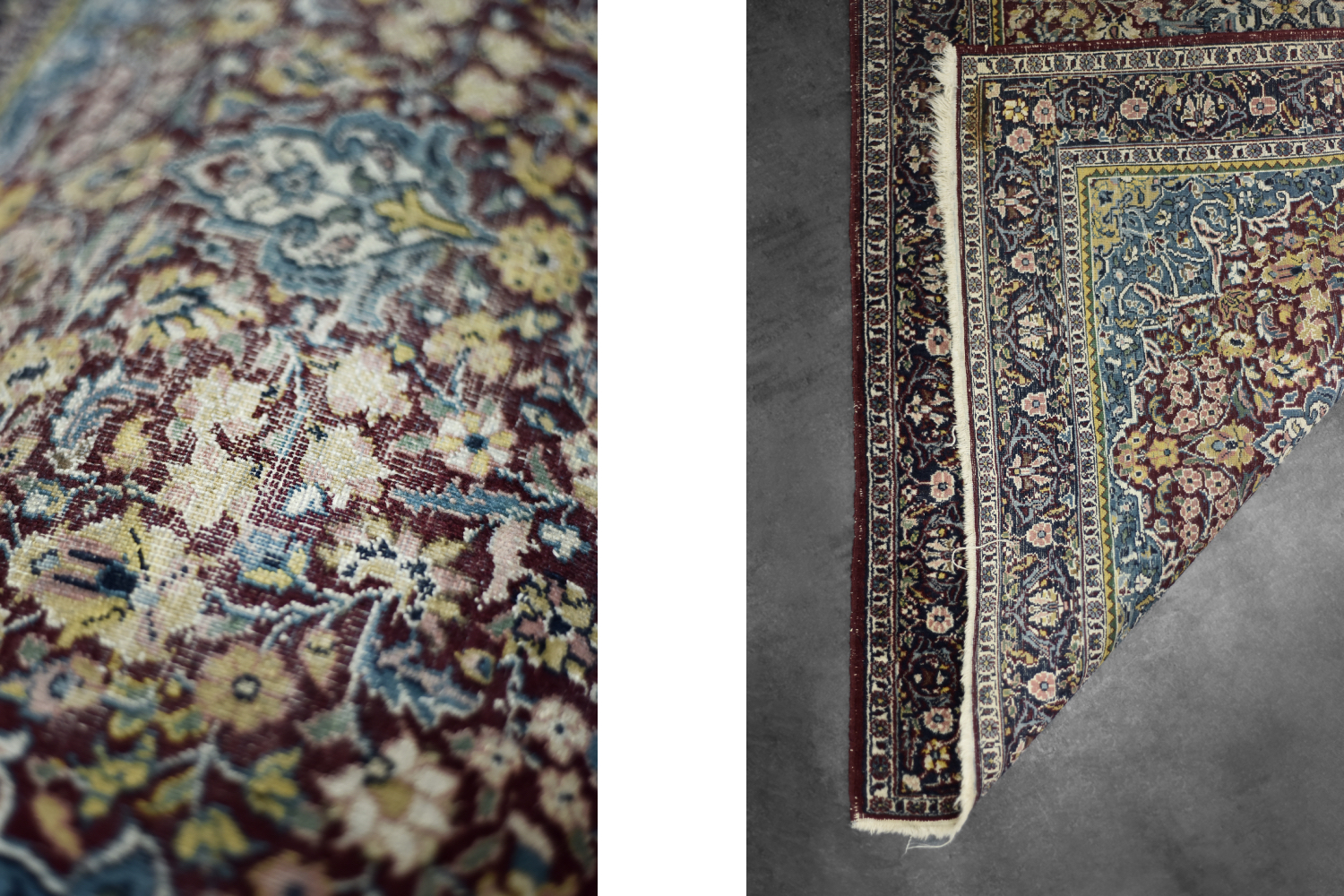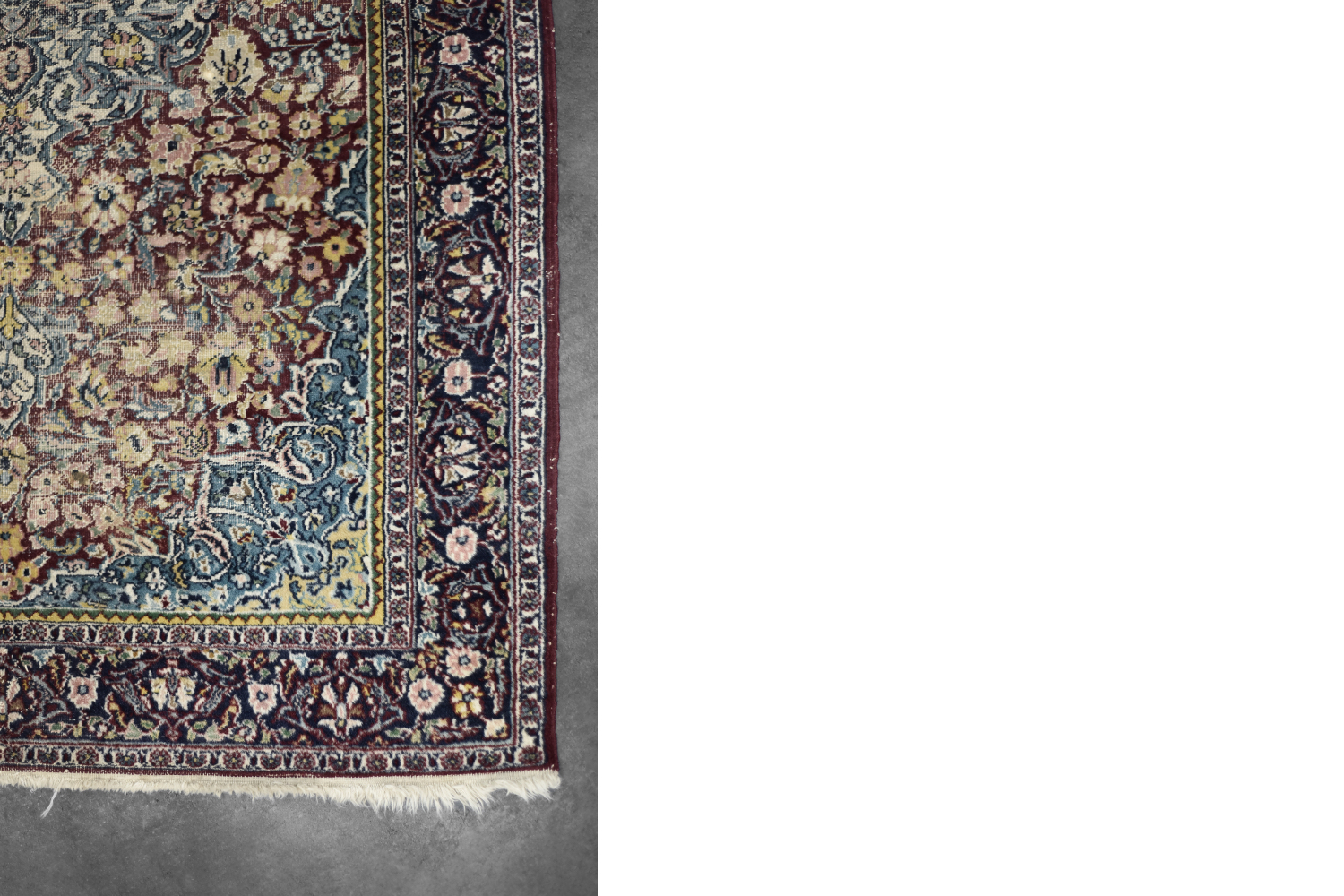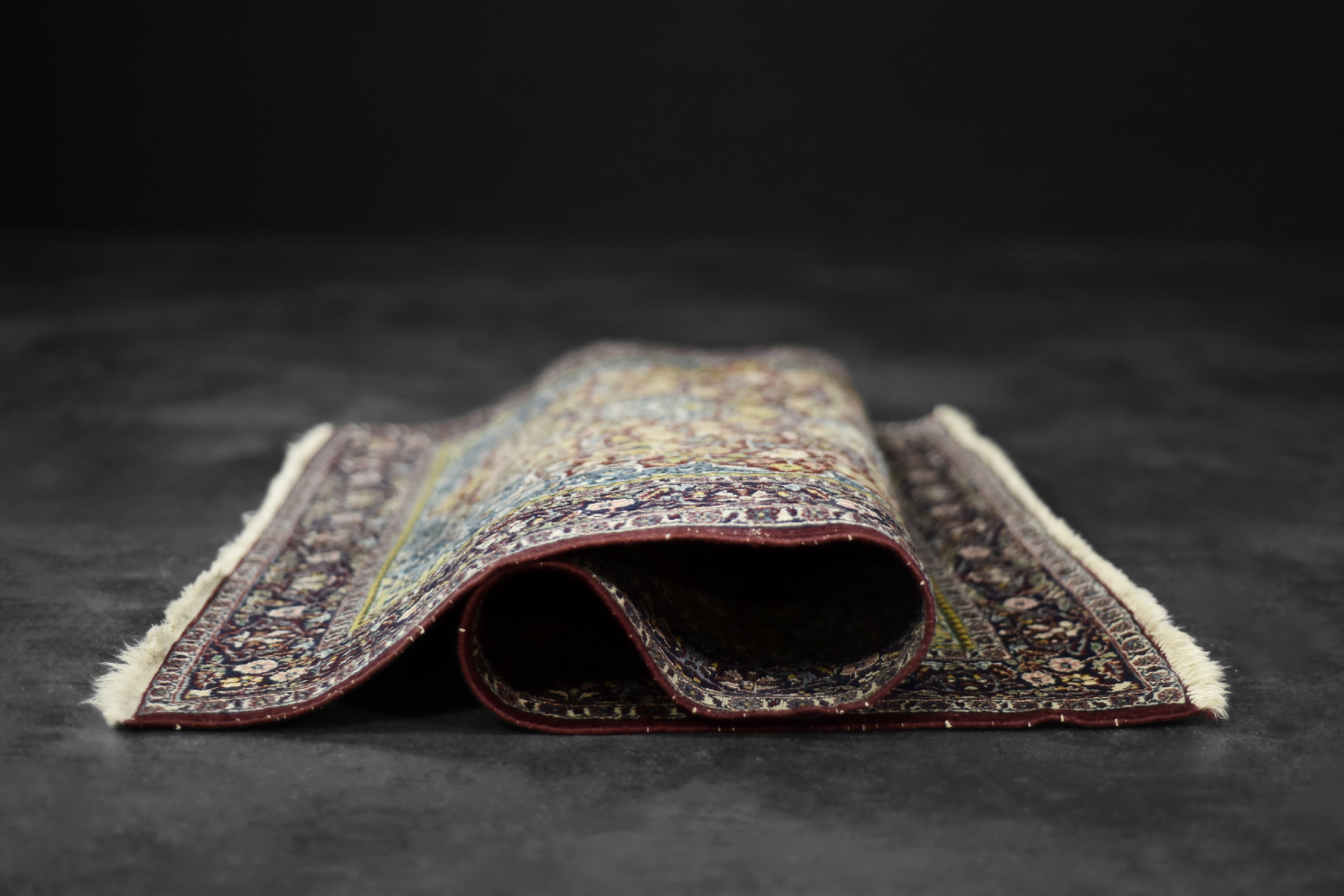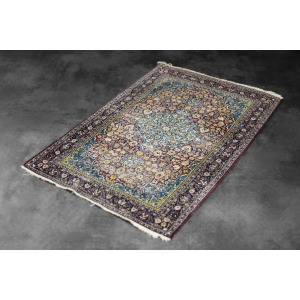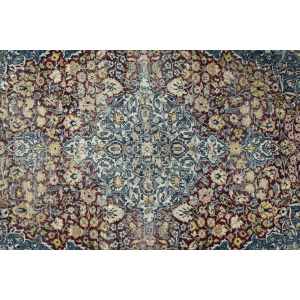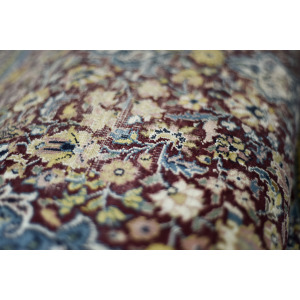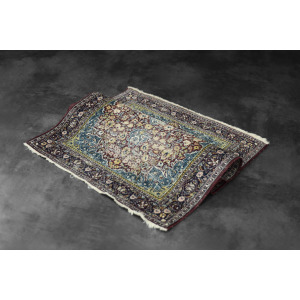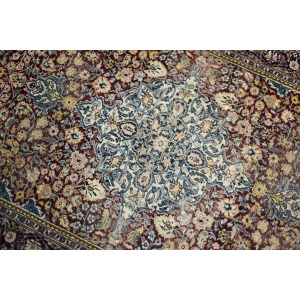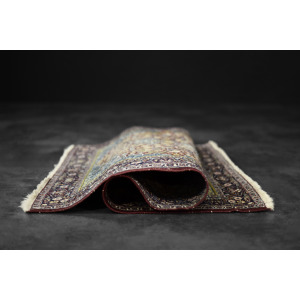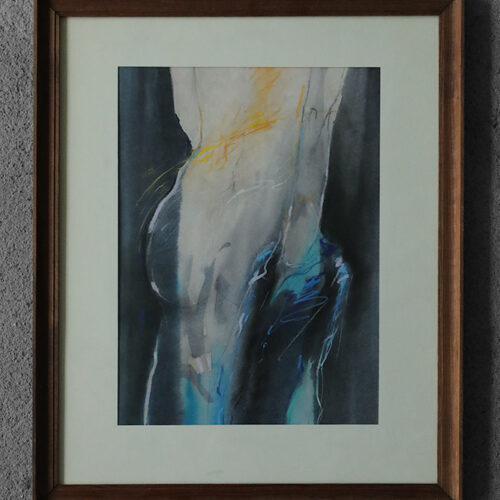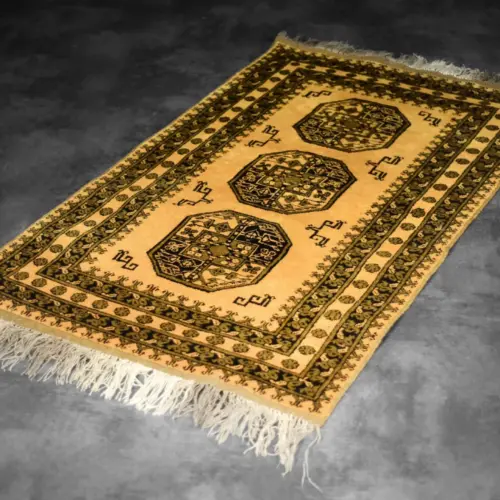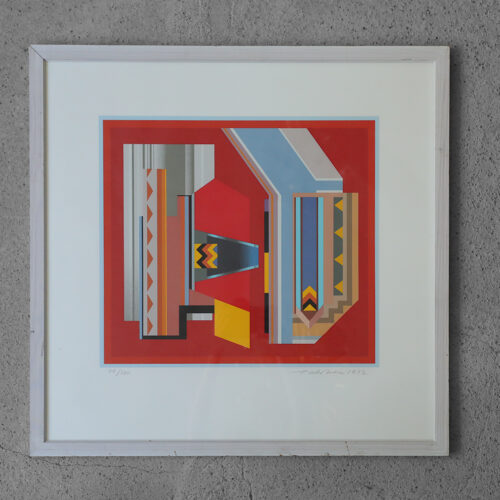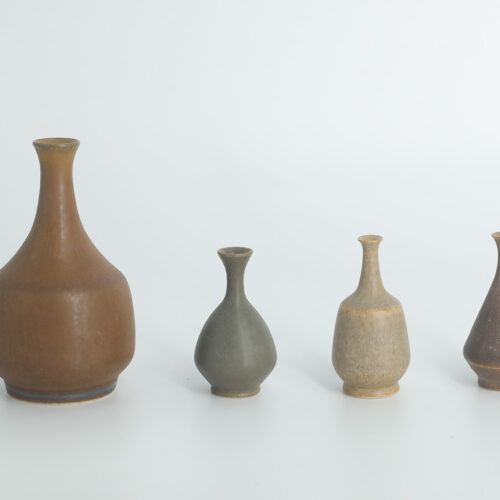Follow Hunt Vintage
Vintage Hand-Woven Middle Eastern Oriental Isfahan Rug, 1940s
Delivering from: Warsaw, Poland
£2,195
- Tree planted with your order
- Secure Payment
- Excellent customer service
- Buyer Protection
- 14-day return guarantee
This hand-woven oriental Isfahan carpet was made in the city of Isfahan in central Iran, during the 1940s. It is naturally dyed in shades of deep red, blue and yellow. The colours intertwine in a distinct and varied pattern, the richness of which is not concentrated only in the central point but is dispersed throughout the carpet.
Isfahan or Esfahan carpets are one of the most famous and valued types of Persian carpets woven in the city of Isfahan. This city is one of the historical centres of production of very high quality carpets, which are considered to be among the best in the world. Isfahan carpets often have a symmetrical arrangement of patterns with a central medallion surrounded by complex floral motifs, leaves and arabesques. The patterns draw inspiration from the rich architectural heritage of the city, especially from the mosaics and tiled decorations of mosques and palaces. Typical colours are deep reds, rich navy blues, dark blue, gold and shades of beige and green. These colours are often used in harmonious and sophisticated combinations. Isfahan rugs are usually made of the highest quality wool, often with the addition of silk, which highlights the details of the pattern and gives the rug a delicate shine. The warp of the rug is usually silk or cotton, which ensures durability and precision in weaving. Isfahan rugs are woven using an asymmetric knot, which allows for a high knot density – often over 500,000 per square metre, which is synonymous with the highest quality. The high knot density allows for the creation of very precise and intricate patterns. Isfahan rugs have a long history, dating back to the Safavid dynasty (16th-17th century), when the art of weaving rugs in Isfahan reached its peak. They are considered to be among the most luxurious and artistically valuable Persian rugs, often collected as works of art. Isfahan rugs are often considered a symbol of Persian excellence in the art of weaving rugs and are sought after worldwide by collectors and lovers of luxury interiors.
The rug is in original vintage condition. It has signs of wear due to age, minor abrasions in the fleece. Before shipping, the rug will be professionally cleaned and ready to use.
The rug has an abrash effect. This is a phenomenon that occurs in traditional, hand-woven rugs, characterized by subtle differences in shades of the same color within a single fabric. This is most often seen in Persian, Turkish, Caucasian and other rugs that are handmade from natural materials such as wool or silk. Variations in color can result from the use of natural dyes, which do not always give a uniform effect, especially when the wool has been dyed in different batches or at different times. As the wool ages, it can change color to varying degrees, which also contributes to the abrash effect. Although this effect could be seen as an imperfection, it is often appreciated by collectors and lovers of traditional rugs, as it adds a unique character and authenticity to the handmade and adds value to the rug.
| Dimensions | 137 × 92 × 1 cm |
|---|---|
| Color | |
| Condition | |
| Item Location | |
| Material | |
| Origin | Iran |
| Period | |
| Style |

GARAGE GARAGE
WEIMAR, 1919, VIENNA, THE ‘30S. MICHIGAN, THE ‘60S. COPENHAGEN, 1963. OUR STUDIO PROVIDES YOU WITH A TRAVEL AROUND THE WORLD. THIS PLACE IS CREATED OUT OF THE FURNITURE PASSION, THE NEED FOR BEAUTY AND CURIOSITY ABOUT INDUSTRIAL DESIGN, STILL NOT ENOUGH APPRECIATED. SINCE 2010 WE’VE BEEN ENLARGING OUR COLLECTION OF UNUSUAL OBJECTS, THE MOST OUTSTANDING FORMS IN THE HISTORY OF DESIGN, WHICH WERE CREATED IN THE YEARS 1900-1990, WITH FEW EXCEPTIONS.
Shipping Policy
Free collection is available.
Depending on your location, this item may be subject to import duties/tax. Please contact the seller for more information.

